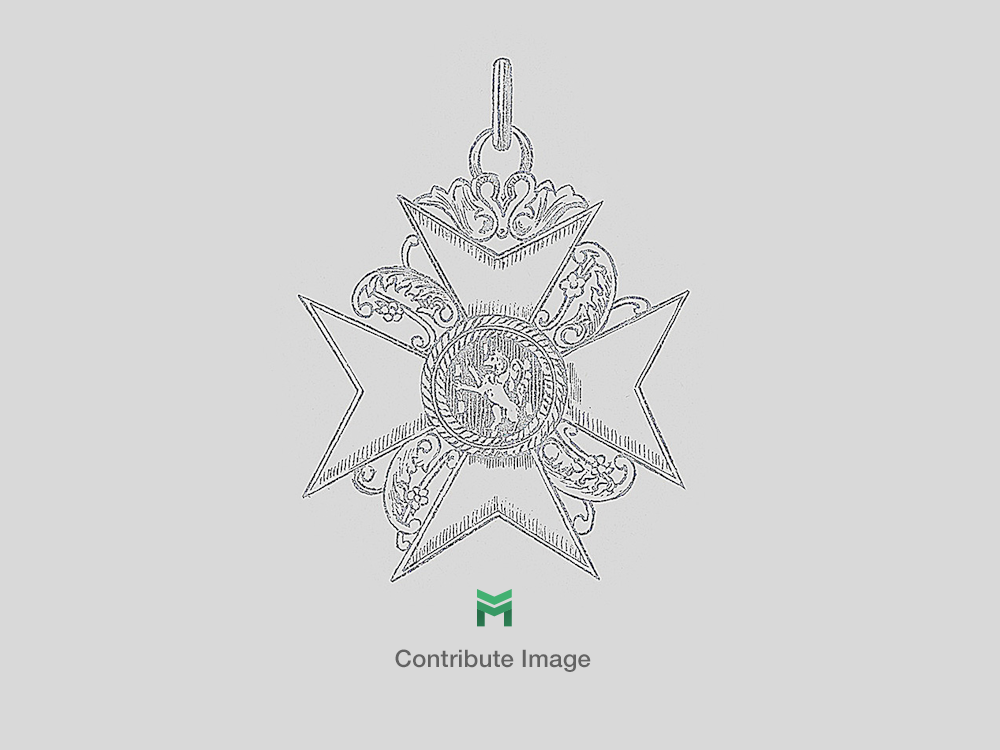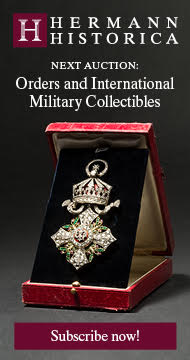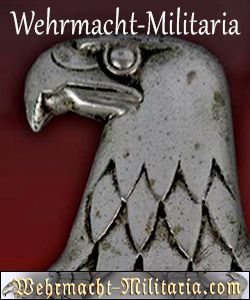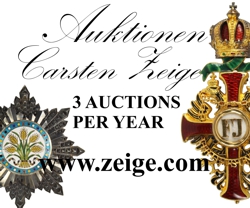Kriegsmarine Official with Konteradmiral Rank Shoulder Boards
CATEGORY: Version
SKU: 21.GOR.03.02.02.08.01.003.000
Estimated market value:

Estimated market value:
The headgear, uniforms, and insignia worn by members of the Kriegsmarine were based upon the designs utilized by the Kaiserliche Marine (Imperial Navy) and the Reichsmarine of the Weimar Republic. The official regulations governing the uniforms of the Reichsmarine were issued on April 5, 1921, and they were embraced, with a few alterations, as the Kriegsmarine uniforms in 1935.
The first regulations concerning the shoulder boards of officers were issued in 1933, but they were altered several times throughout the interim years and during the war.
Shoulder boards or straps were first and foremost used to identify a soldier’s rank. In certain cases they would also identify the soldier’s branch and unit, and potentially his specific role/career.
Shoulder straps were worn by lower ranks, whereas shoulder boards were worn by higher ranks. The difference lies in the quality of the material, the more elaborate look of the shoulder boards, and the fact that shoulder boards were padded and therefore more stiff, while shoulder straps generally were not. For the sake of simplicity, the terms will be used interchangeably.
Shoulder straps differ in size due to varying production methods and materials, the amount of pips and cyphers they have to hold, and even the wearer’s shoulder size.
The Kriegsmarine shoulder boards were manufactured in three distinct styles, sew-in, slip-on, and pass-through. The boards on the tropical uniform were generally button-on.
The Kriegsmarine used four different uniform types, distinguishable by colour. The shoulder boards will differ from each other depending on what type of uniform they were intended for. The main uniform was navy blue in colour and features shoulder boards with a dark blue underlay. Shoulder boards for the white uniform are very similar, except that they have a white underlay. The brown tropical uniform and the field-grey uniform used mostly by Coastal Artillery units came with shoulder boards that somewhat differed from those of the blue and white uniforms, and will be covered towards the end of this description.
In the Kriegsmarine, shoulder boards were used by soldiers of every rank. An exception were the lowest ranks, the Enlisted Men (EMs), known collectively as Matrosen (seamen), who were only issued shoulder boards with the field-grey uniform and, on occasion, the tropical brown uniform.
Shoulder boards for officer ranks were made of silver, grey, or gold-coloured cords. The underlay was the same colour as that of the uniform. The cords of admirals usually had a dark blue underlay. Exceptions have been observed, for example admiral rank shoulder boards with a field-grey underlay for the field-grey uniform, but this is very uncommon.
Shoulder boards of other, lower than admiral officer ranks were influenced by the colour of the uniform. On the blue and white uniforms officers wore bright silver cords, while on the field-grey uniform they wore matte silver or matte grey cords, and on the brown tropical uniform they wore matte grey cords until April of 1942, after which the cords worn on the blue uniform were also allowed.
Shoulder board career insignia cyphers for officers were made of metal. They were silvered for admiral ranks and gold-coloured for all other officers, which is the opposite of what was used on epaulettes.
The shoulder board career insignia cyphers for officers were as follows:
Administration: a mercurian staff
Artillery Ordnance: two crossed gun barrels
Communications: a lightning bolt
Communications Engineering: a lightning bolt with a superimposed cog wheel
Defensive Ordnance: a mine
Engineering: a cog wheel
Line Officers: a star, or no cypher at all
Medical: a caduceus
Naval Artillery: a winged flaming shell
Torpedo Technicians: a cog wheel with a superimposed torpedo
The shoulder boards for admirals consist of two parallel gold-coloured cords with a silver cord in between, intertwined with four bends at the sides and two at the bottom. Instead of pips, the shoulder boards for the rank of Großadmiral show two crossed silver batons. Those for the rank of Generaladmiral have three pips, those for the rank of Admiral have two, those for the rank of Vizeadmiral have one, and those for the rank of Konteradmiral have no pips.
The shoulder boards of field grade officers consist of two parallel flat cords intertwined with five bends at the sides and two at the bottom. The shoulder boards for the rank of Kapitän zur See have two pips, one above and one below the career insignia cypher. Those for Fregattenkapitän have one pip below the cypher. Those for the rank of Korvettenkapitän have no pips.
The shoulder boards of company grade officers consist of four parallel cords that are rounded at the end. The innermost cord forms the buttonhole. The shoulder boards for the rank of Kapitänleutnant have two pips, one above and one below the career insignia cypher. Those for the rank of Oberleutnant have one pip below the cypher. Those for the rank of Leutnant have no pips.
Officials wore the same uniforms and insignia as the soldiers of their equivalent rank, but with insignia in silver rather than gold-coloured. An exception to the rule were paymasters who wore gold-coloured insignia.
The careers of the officials with officer equivalent ranks were identified by branch insignia, which were introduced in 1936, and branch-coloured backing of the shoulder boards. Before 1936, officials wore a Weimar pattern eagle insignia cypher instead of a branch insignia cypher.
Before 1940, officials with NCO equivalent rank wore senior NCO style shoulder straps with silver tress instead of gold-coloured tress. They wore neither branch insignia cyphers nor branch colours. In mid 1940, new shoulder boards were introduced. They were made of flat cords with threads forming a V-pattern. The width of the inner third of the cords was in silver, while that of the outer thirds was dark blue. The boards consist of an inner braiding with either six or seven lateral bends and a surround of one cord. There are three bends at the bottom. An underlay of branch colour and branch insignia cyphers were introduced.
Branch colours were as follows:
Administrative: cornflower blue
Judicial: crimson
Technical: black
Navy High Command: dark blue
With the introduction of the career/branch insignia cyphers in 1936, the Weimar style eagle was replaced by a Wehrmacht style national eagle emblem. Underneath it, the branch insignia is located. The number of insignia identified the wearer’s career grade: one for lower and medium careers, two for elevated career, and three for high grade career. Only officials with NCO equivalent ranks wore career insignia cyphers on their shoulder boards (after 1940, not on the pre-1940 shoulder straps), while officials with officer equivalent rank did not.
The branch insignia were as follows:
Administrative: one to three chevrons, with one oval eye at the bottom. Branch colour: cornflower blue
Dental Service: only a high grade career. Three transversal rhombs. Branch colour: cornflower blue
Judicial: a scale with one to three swords. Branch colour: crimson
Machinist Service: half or full cog wheel. Branch colour: black
Nautical Service: one or two anchors. Branch colour: black
Pharmacists: only a high grade career. Two wavy lines with a chevron underneath. Branch colour: cornflower blue
Teachers: one to three rosettes. Branch colour: cornflower blue or black
Technical: one to three equilateral downward pointing triangles. Branch colour: black
Workshop Service: one or two upwards pointing chevrons. Branch colour: black
In early 1944, the Special Troop Service (Truppensonderdienst) replaced the branch of officials in the Kriegsmarine. There were two branches, administrative and judiciary.
Instead of the silver insignia worn by the officials, members of the Truppensonderdienst now wore gold-coloured insignia, just like the officers they were equal in rank to. An exception were those of ranks equivalent to admirals, which, like the admirals of the Kriegsmarine, wore silver insignia.
Members of the administrative branch wore a mercurian staff as their career insignia cypher. It differed from the regular Kriegsmarine administrative cypher by having an additional bar at the bottom. Their branch colour was cornflower blue. Members of the judiciary corps wore a sword as their career insignia cypher. Their branch colour was crimson. The administrative branch had members with equivalent ranks of Admiral down to Leutnant, while the judiciary corps had members with equivalent ranks of Admiral down to Kapitänleutnant.

Comments
Sign in to comment and reply.


Scroll Top